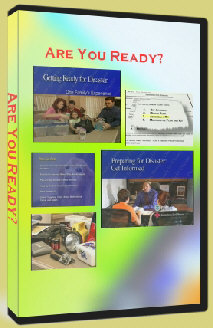Some of the saddest scenes shown by the news media after a disaster are the scenes where people talk about how they had to leave their family pet behind because there was no room in the rescue boat or helicopter or a place for them in the emergency shelter. What is more sad is that most of these heartbreaking stories could have been prevented if the people prepared an emergency preparedness plan for their pets (and themselves or course. For more info. check out our article your emergency preparedness kit for your family.)
Building an emergency preparedness kit for your pets is fairly simple and only requires a few things – many of which you probably already have in your own home. Your pet emergency kit should include:
- Food – Canned food is excellent as it has a very long shelf life but if your pet eats dry food, store an unopened bag in a waterproof container. Also keep an eye on the expiration dates so you can rotate the food out from time to time.
- Water – Be sure to keep a supply of clean water for your pet. Have a three day supply as a minimum in your pet emergency kit.
- Medicines/Records – If your pet is on medications or has a medical condition, be sure to include these in your kit. A copy of your pet’s records can be kept in the kit permanently but you may not have extra medicine to leave in there. In that case, put a big sticker on the top of the kit so when you need it you will remember to go back and grab the pet’s medicine.
- Pet first aid kit – Chances are you will not find one of these in the store so you will have to make one up yourself. As a minimum it should include cottoon bandage rolls, bandage tape, bandage scissors, antibiotic ointments, flea and tick prevention, isopropyl alcohol and saline solution and a pet first aid book. Your knowledeable pet shop owner or local veterinarian may make other suggestions.
- Pet carrier – The safest way to transport your pet is in a carrier designed for this purpose. While your pet may enjoy a ride in the car on your lap, keep in mind that during an emergency it will possibly be panicked and you do not need to be driving with a panicked pet. It is not safe for you or your pet.
- Collar with id tag and leash – It is important that your pet has identification on it and is kept restrained at all times during a crisis. This will keep it from being confused and wandering off. And if it does wander off, the id tag will help to reunite it with you.
- Comfort items – It is good to have a few favorite toys in the emergency preparedness package for your pets. Seeing and interacting with familiar play items/bedding will help them calm down.
Your pet is a part of your family. Take a little time to ensure its safety while you are taking the steps to ensure your safety in your emergency planning. Those few extra moments will ensure that you have the continued companionship of your pet during and after the emergency is over.
Similar Posts:
- Duck and Cover Civil Defense
- Hardtack: What is it?
- A Brief History of the Quartermaster Corps
- The War of the Rebellion Atlas DVD
- 1939 World Fair Time Capsule

